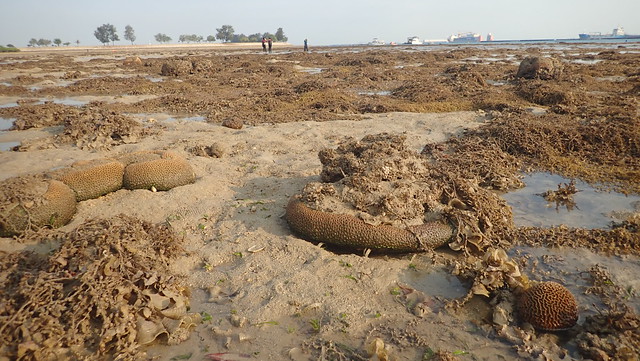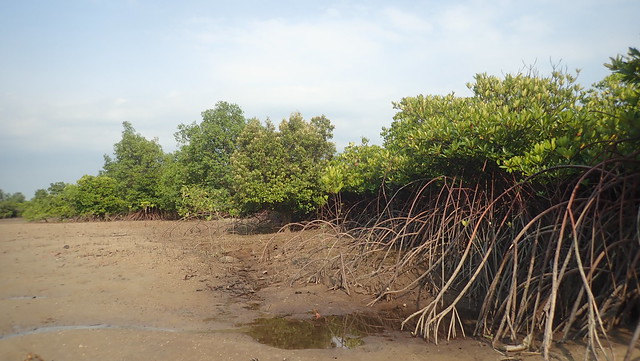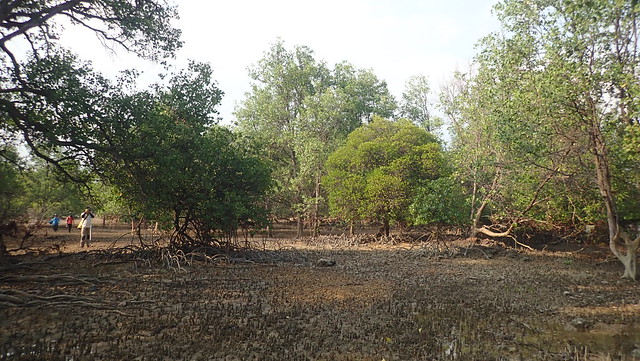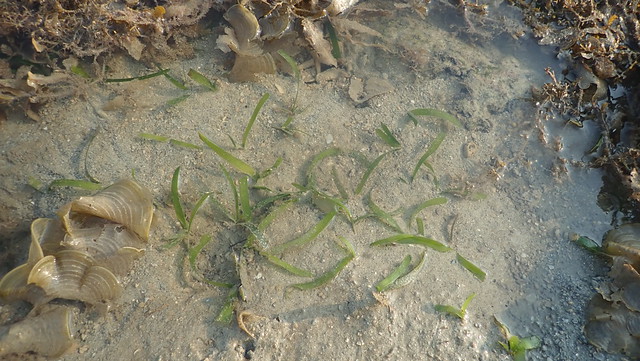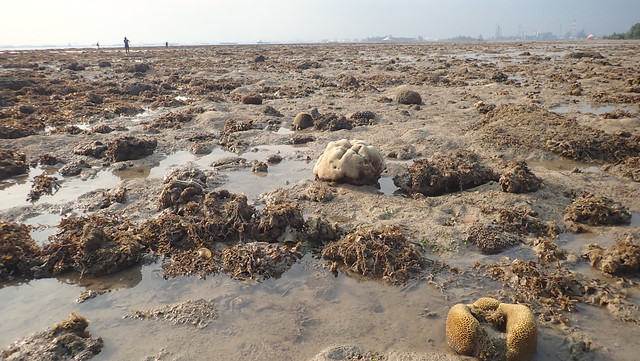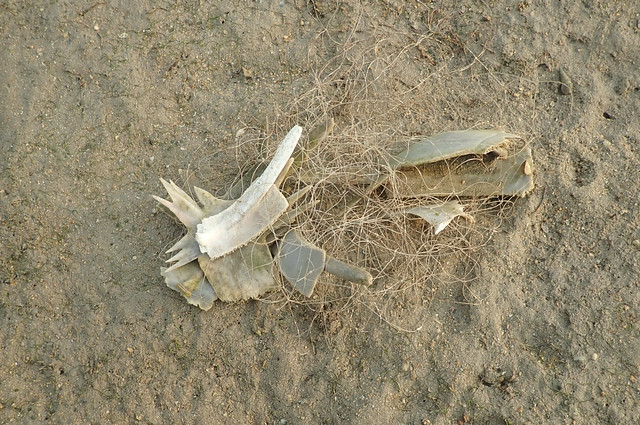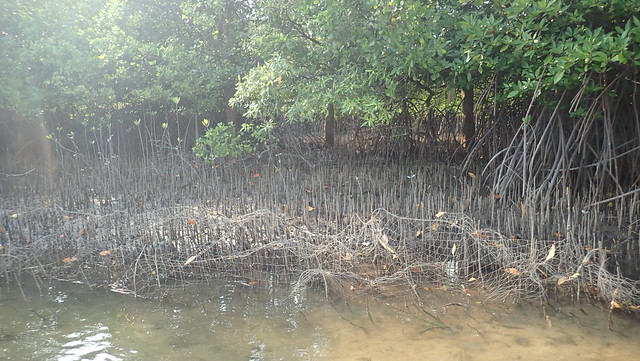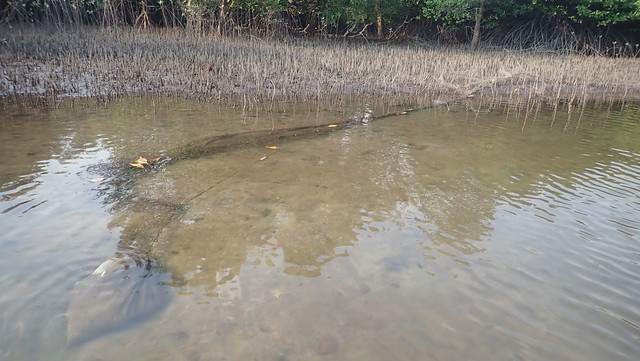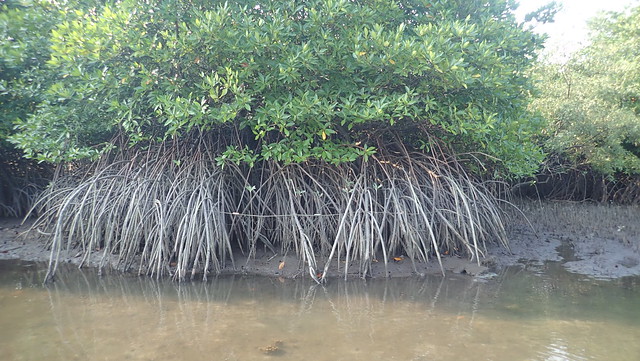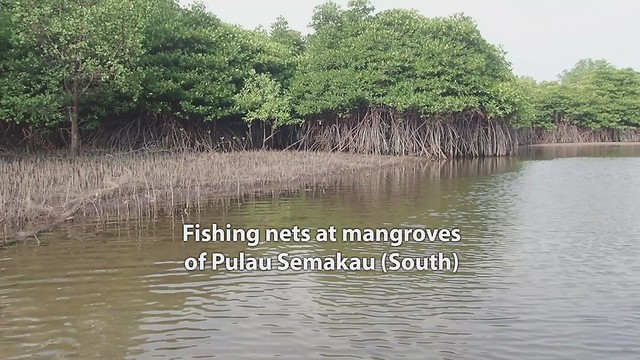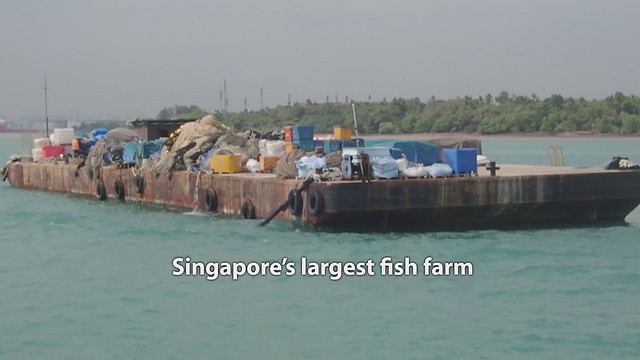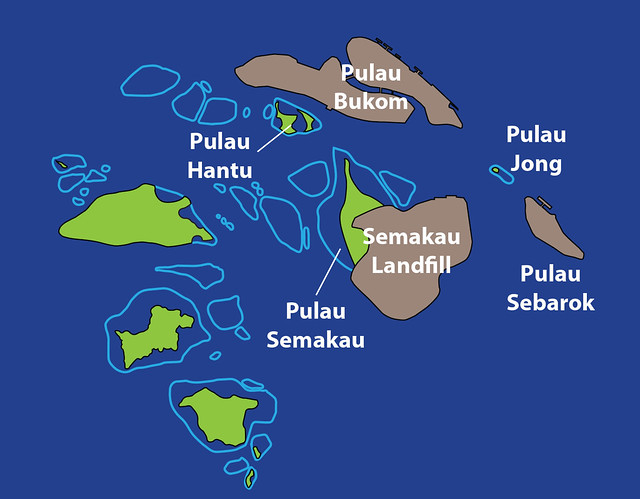There are living reefs, seagrass meadows and mangroves next to Singapore's only landfill. We surveyed them on a warm evening.
The mangroves seem to be doing well, seagrasses not quite recovered with most Tape seagrasses still cropped. I saw many pale corals, and alas, the bones of a sea turtle in a fishing net.
We were joined by a small team from NParks who were here to look into replanting some of the rare coastal and mangrove trees found on Pulau Semakau. Among them, the Critically Endangered Pink-eyed pong pong. This is great, because some of these trees growing by the shoreline have started to fall over due to erosion.
I had a quick look inside the mangrove area. It was great to see many young mangroves taking root.
There were also many large mangrove trees growing near the area of planted mangroves. But I didn't manage to find the rare and Critically Endangered Api-api jambu. We also didn't manage to find any Seashore bat lily.
The lovely large Tengah putih is still there, glowing in the sunlight in this photo.
There were not much seagrasses upstream in the mangroves. And most of the Tape seagrass I saw there were cropped. But I saw more lush patches of seagrasses towards the sea, including near the seawall with the landfill.
There were sparse growths of fresh green seaweed towards the reef edge. But I sense the situation is not very different from our last survey in Oct 2018.
There are not a lot of hard corals on this part of Pulau Semakau. It was alarming to see many of them were very pale. On our last survey here in Oct 2018, the corals were also stressed.
Most of the Merulinid corals I saw were pale.
I saw pale Acropora coral and Branching montipora coral. I saw a few large Cauliflower coral that were mostly alright.
The Pore corals I saw ranged from very pale to somewhat pale. I saw two Anemone corals that were alright.
I saw a few Horse mussel clams on the shore, in small groups of less than 10, spread apart. They did not take over the shore. Unlike what we saw at Changi on Feb 2019. I saw several Giant carpet anemones, they were not bleaching and one had an anemonefish. The rest of the team saw Knobbly sea stars, a file snake, a Giant clam and other interesting marine life.
It was heartbreaking to come across the bones of sea turtle, still gathered in the net that probably drowned this air breathing animal.
I also saw nets laid out in the mangroves.
This was was about 50m long.
There were nets also tied to the mangrove roots.
Here's a video of the fishing nets I saw.
Rajkumar was with another team on another part of Pulau Semakau. He also found nets which had trapped horseshoe crabs.
There was some trash on the shore.
Including a battery (probably dumped there as these don't float), and some bags that look like they came from the Barramundi fish farm opposite the shore.
Here's a brief video of our survey. As usual, on the way to the shore, we pass by a fish farm which is said to be the largest fish farm in Singapore. We have noticed many disturbing impacts of this fish farm on the natural shores of Pulau Semakau, see the post after our trip on Aug 2014.
More about Pulau Semakau
Just as Changi Airport and Changi Beach are not the same even though they are near one another and share a name, Pulau Semakau is NOT the same as the Semakau Landfill. The Landfill was created by destroying all of Pulau Saking, and about half of the original Pulau Semakau by building a very long seawall. Fortunately, the landfill was constructed and is managed in such a way that the original mangroves, seagrass meadows and reefs on Pulau Semakau were allowed to remain.
It is NOT true that the construction of the Landfill created the marine life found on Pulau Semakau. The marine life was there long before the Landfill was built.
As the existing half of the Landfill was used up, the Phase 2 of the Landfill was launched. This involved closing the gap of the seawall on the Semakau Landfill, forming one big pool where incinerated ash will be dumped. NEA worked to limit the damage to natural shores during the construction work for this expansion of the landfill.
The 2030 Landuse Plan by the Ministry of National Developmentreleased in Jan 2013 shows plans for 'possible future reclamation' (in light blue surrounded by dotted lines) that may impact the eastern shore of Pulau Semakau. More about the possible impact of the 2030 Landuse Plan on our shores.
The Singapore Blue Plan 2018
Pulau Semakau and nearby islands and submerged reefs have been recommended by the Singapore Blue Plan 2018 for Immediate Conservation Priority.
The Blue Plan recommends the intertidal and subtidal marine areas of Pulau Semakau and adjacent Pulau Hantu, and Pulau Jong to be designated Marine Reserve.
The Blue Plan highlights that Pulau Semakau and its associated patch reefs comprise many ecosystems: coral reefs, mangrove areas, intertidal sandflats, seagrass meadows, and coral reefs. The subtidal area of Pulau Jong is larger than the terrestrial area. Pulau Hantu is a popular dive site has seen increasing interest in the past decade due to biodiversity awareness. If protection is accorded to these three islands, zonation plans for use can be implemented to manage tourism and human impacts.
DOWNLOAD the Plan, SUPPORT the Plan! More on the Singapore Blue Plan 2018 site.
Photos by others on this trip
Abel Yeo
Vincent Choo
Parizad Nasheer
Shawne Goh

